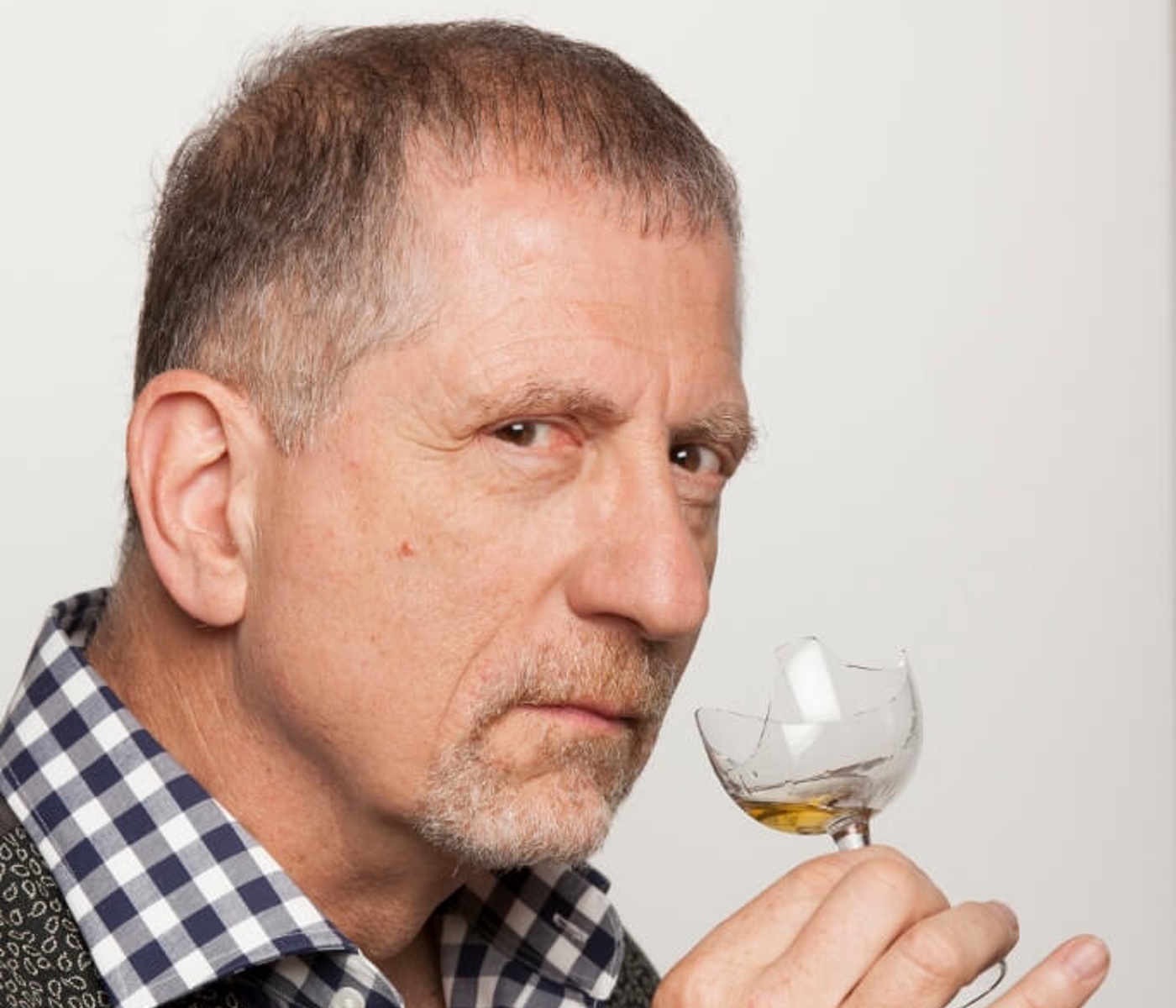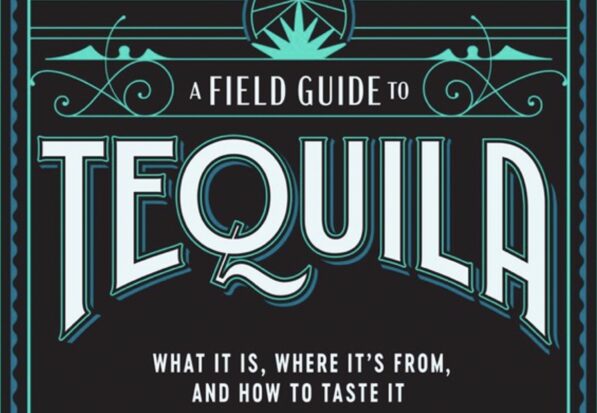There is no better way to phrase the times in which we live, in terms of whiskey and whiskey production, other than to say we are definitely in a golden age. It is fair to say that there has never been a time when there has been so much good quality whiskey available.
But with so much whiskey made in so many distilleries from so many different countries, the question can easily be posed “Do you really know what you are drinking?”
Robin Robinson, the renowned whiskey educator who created the popular Whiskey Smackdown series at the Astor Center in New York City, believes that Whiskey, for all its popularity, is still shrouded in myth and confusion. And that’s something he wants to change.
 PIN IT
PIN ITRobin Robinson
Earlier this month, his first book The Complete Whiskey Course: A Comprehensive Tasting School In Ten Classes was released as a way to help you understand and appreciate the exploding world of Whiskey. More than just a tome to demystify the ‘water of life’, Robinson has designed a book that not only challenges the myths but takes you on a tour from grain to glass, then asks you to bring that glass around the world.
“For the brand new or the intermediate drinker, I want this to be their welcome mat, their red carpet into the category,” Robinson told Cocktail Collective. “Yet for the professional in the industry, I’m looking for this to be their ultimate reference guide.”
Robinson believes that there is a great need for a book that can easily outline the basics of whiskey in very general terms, yet also has enough depth to satiate the curiosity of the more experienced drinker. He is, by his own admission, trying to walk that balance line between professional and amateur.
“What happens a lot in the industry is that you get taught through the perspective of one brand or one person,” he continued. “But this book, I hope, presents Whiskey in a larger framework. It looks at what whiskey is, what whiskey can be and what whiskey does. It addresses whiskey’s past and subsequently, it’s future.”
Now if you work in the industry, you might easily assume that people know the difference between different styles, grains, and the wood in which they are aged but Robinson points out for most people there are a lot of gaps and misconceptions around the spirit.
“People go about their lives;” he explains, “they’ve got jobs and they’ve got worries and children and mortgages and cars. They don’t have the time to go on these massive intellectual pursuits. That is unless you really have a passion for it.
“For the most part, here in the United States at least, people remain in the dark,” he explained. “And in fact, the questions that come up more often are, ‘Is Scotch a whiskey?’ ‘Is Bourbon a whiskey?’ Sometimes people don’t make the connection.
“A good example is Jameson Irish Whiskey is one of the top-selling whiskey brands in the world. There are people here who drink that on a regular basis and really have no idea that its Irish whiskey.”
Now while you might be wondering how people could not know, (after all it’s written on the bottle), Robinson explains that if you are simply getting shots at the bar, you’re not going to read the bottle or have any inclination to do so.
And that is what Robinson wants to correct. After years of running his courses but also seeing the industry through the eyes of a brand ambassador, he knows there are a variety of common myths and misconceptions.
“I’ve poured 10,000 samples for people in my career. I’m not a journalist who approached this from this sort of a purist perspective. I was out there selling this stuff. And I can tell you that many people approach this as if it is something exotic.”
Robinson believes that one of the most difficult things is to change the perception of what whiskey actually is. “For many years, to drink Whiskey was to do something a little risqué. You were out on the edge.
“Whiskey, especially in the United States, has this sort of western frontier, manly veneer. There is still the mythology that whiskey is John Wayne jumping off the horse after a dusty day, drinking a shot of Red Eye from a dirty glass in some saloon somewhere.”
While Robinson believes that education needs to come from a variety of sources, he hopes that the areas he has covered in the book will go far to helping people grasp the intricacies of the category.
And sure, you could also turn to bartenders to gain more information about the spirit but Robinson feels that while they are the most viable educators and very much on the front lines, there has been too much emphasis on their power.
“Bartenders over the past 10 years have proven themselves to be untrustworthy, in terms of being the purveyor of a brand,” Robinson said. “And that’s because bartenders got smart and they’ve realised ‘hey, I’m up for the highest bidder here’. So what they’ve done is they’ve started an arms race amongst suppliers who want to capture their allegiance.
“It’s not that they’re necessarily buying them directly but they’re offering them so many things, such as trips, awards and feature pieces in magazines. It’s absurd.”
Robinson’s point is not to denigrate the industry, as much as to get people to understand motivations behind the education they get. He would rather that people instead trusted their palettes more and opened their minds. Tasting whiskey, whether that be in bars, at bottle shop tastings or at whisky based events will always teach you where your inclinations lie.
“Get involved in going to events in which multiple whiskies are presented,” he suggests. “The Whiskey Live and Whiskey Fest and things like that. I would suggest that taste should always be an individual journey.”
Yet any journey is helped with a little guidance and that is what Robinson is trying to provide through the pages of his book. Scattered among the chapters are little nuggets of information to help lead you along your whiskey path. As well as breaking down the individual types, Robinson also pulls out particular whiskeys that he believes are worth trying – everything from Glenlivet Single Malt Scotch and Pappy Van Winkle 12-Year Special Reserve Bourbon through to Bushmills 21 Year Single Malt Rare and Nikki Coffee Grain.
“It’s confusing right now for the consumer. Especially when you look at a term like ‘single malt’. Typically people ascribed that term to only one country which is Scotland. And that’s where the education thing is important,” he explains.
“When people hear other countries are making single malt, it typically sets off crazy alerts in people’s heads. Often they’ve never heard the word whiskey coming from places like Australia or India or France or Taiwan, much less single malt.”
To truly make the subject clearer, the book is divided into ten lessons that cover everything from the history, the grain flavours and the importance of wood. There is a lesson on how to taste whiskey, and each of the major producers (America, Scotland, Japan, Ireland, Canada) and the rest of the world. There are even details on whiskey accessories and running a tasting at home.
While Robinson addresses several myths, such as the fact that a lot of people think that all Scotch whiskey has smoky, one of the main misconceptions he covers is that of terroir.
“The literal translation of terroir is ‘from the earth’. If I were a distiller, I’d be completely insulted by marketing going around saying whiskey has terroir. Basically, it means that as a distiller, I’ve had no effect on it.”
Robinson believes that a better word is ‘provenance’, as it actually describes what he thinks people are assuming they’re describing when they use the term terroir.
“Provenance actually covers everything,” he points out. “And particularly it gives credit to the savoir-faire and that’s the thing that gets left out of terroir. Provenance means from the origin, and it takes in every one of those individual things and the choices that the distiller made, and gathers them into a unique origin that nobody else can copy.
“And that means every separate distillery can claim their own specific provenance,” he explains, “because of the effect that they have had on these natural ingredients during the manufacturer.”
And that is the thing about whiskey that Robinson wants to strongly point out; whiskey is a manufactured product. Unlike wine (where the term terroir originated), which has four or five steps from grape to glass by way of fermentation. Alternatively, whiskey simply doesn’t exist unless someone decides to make it. Therefore, Robinson states, it’s a manufactured product.
“You start manufacturing whiskey as soon as you start to malt the grain; the way that you grind, that’s going to affect the flavour. The way that you mash and how much you extract. Do you water, do you not water? How long is your fermentation time? Is that fermentation done in wood, or is it done in stainless steel?
If I was a distiller, I’d be completely insulted by marketing going around saying whiskey has terroir. Basically it means that as a distiller, I had no effect on it.
“All the way through you are making chemical changes to it. And then there’s the wood effect. The maturation effect, and the types and time of the wood, you can’t argue terroir.”
Also scattered throughout the book are some great little Whiskey facts. Our favourite is, “In their cooperage, Yamasaki uses a specially tooled machine that constructs a barrel horizontally instead of vertically”.
Robinson wants you to approach whiskey and also the book, very much as an adventure. “I think one of the strengths of this book is that we have created it in such a way that you can open it up almost to any page, in any of the classes, and pull something out that will be a value to you.
“A good whiskey wants to make you go back into the glass a second time. And so this book, hopefully, will want you to come back in a second or a third or a fourth time and take more out of it.“
For more information on The Complete Whiskey Course go to amazon.com










